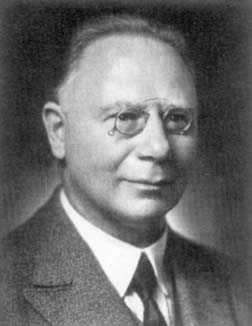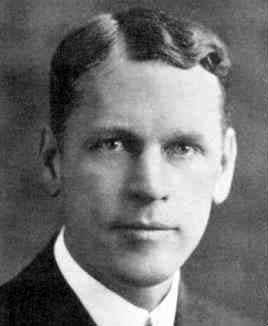<Back to Index>
- Mathematician Leopold Löwenheim, 1878
- Mathematician Oswald Veblen, 1880
PAGE SPONSOR

Leopold Löwenheim (26 June 1878 in Krefeld, Germany (also the birthplace of Max Zorn) – 5 May 1957 in Berlin) was a German mathematician, known for his work in mathematical logic. The Nazi regime forced him to retire because under the Nuremberg Laws he was considered only three quarters Aryan. In 1943 much of his work was destroyed during a bombing raid on Berlin. Nevertheless, he survived the Second World War, after which he resumed teaching mathematics.
Löwenheim (1915) gave the first proof of what is now known as the Löwenheim – Skolem theorem, often considered the starting point for model theory.

Oswald Veblen (June 24, 1880 – August 10, 1960) was an American mathematician, geometer and topologist, whose work found application in atomic physics and the theory of relativity. He proved the Jordan curve theorem in 1905.
Veblen was born in Decorah, Iowa. He went to school in Iowa City. He did his undergraduate studies at the University of Iowa, where he received an A.B. in 1898, and Harvard University, where he was awarded a second B.A. in 1900. For his graduate studies, he went to study mathematics at the University of Chicago, where he obtained a Ph.D. in 1903. His dissertation, A System of Axioms for Geometry was written under the supervision of E. H. Moore.
Veblen taught mathematics at Princeton University from 1905 to 1932. In 1926, he was named Henry B. Fine Professor of Mathematics. In 1932, he helped organize the Institute for Advanced Study in Princeton, resigning his professorship to become the first professor at the Institute that same year. He kept his professorship at the Institute until he was made emeritus in 1950.
Veblen died in Brooklin, Maine, in 1960 at age 80. After his death the American Mathematical Society created an award in his name, called the Oswald Veblen Prize in Geometry. It is awarded every three years, and is the most prestigious award in recognition of outstanding research in geometry.
During his career, Veblen made important contributions in topology and in projective and differential geometries, including results important in modern physics. He introduced the Veblen axioms for projective geometry and proved the Veblen – Young theorem. He introduced the Veblen functions of ordinals and used an extension of them to define the small and large Veblen ordinals. He was involved in overseeing the World War II work that produced the pioneering ENIAC electronic digital computer. He also published a paper in 1912 on the four - color conjecture.
Veblen's uncle was Thorstein Veblen, noted economist and sociologist.